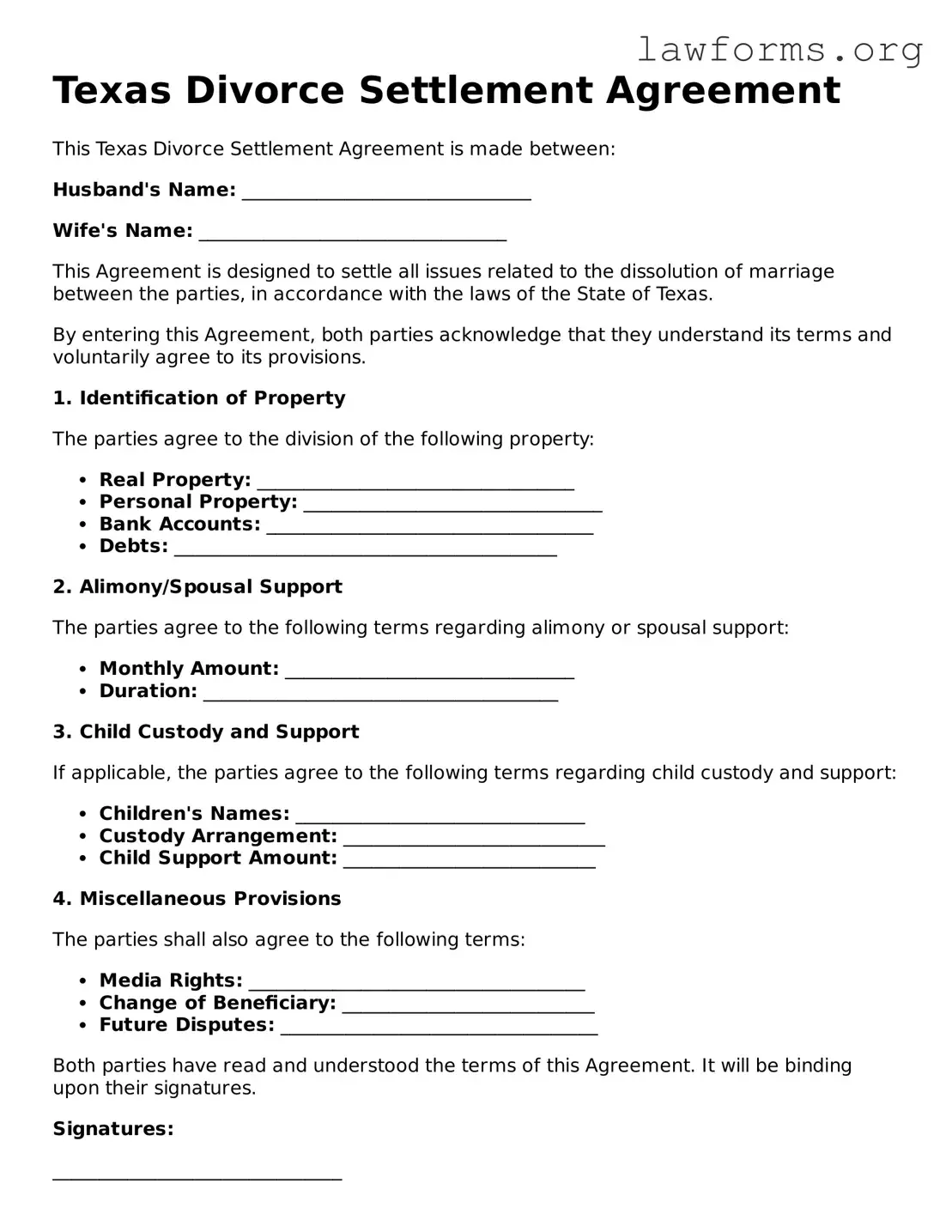Texas Divorce Settlement Agreement
This Texas Divorce Settlement Agreement is made between:
Husband's Name: _______________________________
Wife's Name: _________________________________
This Agreement is designed to settle all issues related to the dissolution of marriage between the parties, in accordance with the laws of the State of Texas.
By entering this Agreement, both parties acknowledge that they understand its terms and voluntarily agree to its provisions.
1. Identification of Property
The parties agree to the division of the following property:
- Real Property: __________________________________
- Personal Property: ________________________________
- Bank Accounts: ___________________________________
- Debts: _________________________________________
2. Alimony/Spousal Support
The parties agree to the following terms regarding alimony or spousal support:
- Monthly Amount: _______________________________
- Duration: ______________________________________
3. Child Custody and Support
If applicable, the parties agree to the following terms regarding child custody and support:
- Children's Names: _______________________________
- Custody Arrangement: ____________________________
- Child Support Amount: ___________________________
4. Miscellaneous Provisions
The parties shall also agree to the following terms:
- Media Rights: ____________________________________
- Change of Beneficiary: ___________________________
- Future Disputes: __________________________________
Both parties have read and understood the terms of this Agreement. It will be binding upon their signatures.
Signatures:
_______________________________
Husband's Signature
_______________________________
Wife's Signature
Date: ________________
